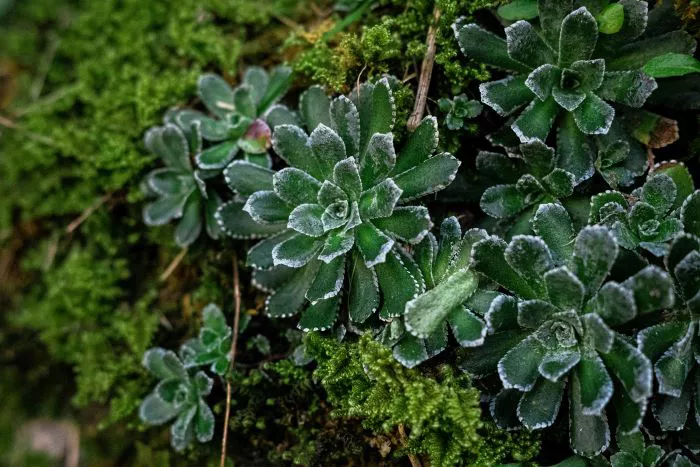Succulents are popular plants known for their unique shapes, vibrant colors, and low maintenance requirements. Many plant enthusiasts enjoy propagating succulents to expand their collection or share with friends. Propagation is the process of creating new plants from existing ones. This article will explore various methods to propagate succulents, the best practices for successful growth, and tips for caring for newly propagated plants.
Understanding Succulent Propagation
Succulent propagation can be done through several methods, including leaf cuttings, stem cuttings, offsets, and seeds. Each method has its advantages and is suitable for different types of succulents. Understanding the characteristics of your succulent species will help determine the best propagation method.
Propagation by Leaf Cuttings
Leaf cuttings are one of the simplest and most popular methods for propagating succulents. This method works well for many succulent varieties, such as Echeveria and Jade plants. To propagate using leaf cuttings, follow these steps:
Select a Healthy Leaf: Choose a healthy, plump leaf from the parent plant. Ensure the leaf is free from damage or disease.
Remove the Leaf: Gently twist or cut the leaf from the stem. Make sure to take the entire leaf, including the base.
Let the Leaf Callous: Place the leaf on a dry surface in a shaded area for a few days. This process allows the cut end to callous over, reducing the risk of rot when planted.
Prepare the Soil: Use a well-draining soil mix, such as a cactus or succulent mix. Fill a shallow container with the soil.
Plant the Leaf: Once the leaf has calloused, place it on top of the soil without burying it. The leaf will eventually produce roots and new growth.
Water Sparingly: Mist the soil lightly or use a spray bottle to keep it slightly moist. Avoid overwatering, as this can lead to rot.
Provide Indirect Light: Place the container in a location with bright, indirect sunlight. Avoid direct sunlight during the initial rooting phase.
Propagation by Stem Cuttings
Stem cuttings are another effective method for propagating succulents. This method works well for succulents like Sedum and Crassula. To propagate using stem cuttings, follow these steps:
Select a Healthy Stem: Choose a healthy stem that is firm and free from pests.
Cut the Stem: Using clean, sharp scissors or a knife, cut a section of the stem. The cutting should be several inches long and have a few leaves attached.
Let the Cutting Callous: Similar to leaf cuttings, allow the cut end of the stem to callous for a few days.
Prepare the Soil: Fill a pot with a well-draining soil mix.
Plant the Cutting: Once the cutting has calloused, insert the cut end into the soil. Ensure that the leaves are above the soil line.
Water Sparingly: Mist the soil lightly and avoid overwatering.
Provide Indirect Light: Place the pot in a location with bright, indirect sunlight.
Propagation by Offsets
Many succulents, such as Aloe and Haworthia, produce offsets or “pups.” These are small plants that grow at the base of the parent plant. To propagate using offsets, follow these steps:
Identify Offsets: Look for healthy offsets that are large enough to be removed.
Remove the Offset: Gently twist or cut the offset away from the parent plant. Ensure that some roots are attached.
Let the Offset Callous: Allow the cut end to dry for a few days to prevent rot.
Prepare the Soil: Fill a pot with a well-draining soil mix.
Plant the Offset: Once the offset has calloused, plant it in the soil, ensuring the roots are covered.
Water Sparingly: Mist the soil lightly and avoid overwatering.
Provide Indirect Light: Place the pot in a bright, indirect light location.
Propagation by Seeds
Propagating succulents from seeds is a slower process but can be rewarding. This method is suitable for those interested in growing rare or specific varieties. To propagate using seeds, follow these steps:
Obtain Seeds: Purchase seeds from a reputable source or collect them from mature plants.
Prepare the Soil: Use a seed-starting mix that is well-draining.
Sow the Seeds: Sprinkle the seeds on the surface of the soil without covering them. Some seeds require light to germinate.
Mist the Soil: Lightly mist the soil to keep it moist but not soggy.
Provide Warmth and Light: Place the container in a warm location with bright, indirect sunlight or under grow lights.
Be Patient: Seeds may take several weeks to germinate. Keep the soil consistently moist during this time.
Caring for Newly Propagated Succulents
Once your succulents have rooted and begun to grow, it is essential to provide proper care. Here are some tips for caring for newly propagated succulents:
Watering: Allow the soil to dry out completely between waterings. Overwatering can lead to root rot.
Light: Gradually introduce the newly propagated plants to more direct sunlight. Start with a few hours of morning sun and increase exposure over time.
Fertilizing: Wait a few weeks before fertilizing. Use a diluted, balanced fertilizer specifically designed for succulents.
Transplanting: Once the new plants are established, consider transplanting them into larger pots if necessary.
Conclusion
Propagation is a rewarding way to expand your succulent collection. Whether using leaf cuttings, stem cuttings, offsets, or seeds, each method offers a unique way to create new plants. By following the steps outlined in this article, you can successfully propagate succulents and enjoy the beauty of these resilient plants in your home. With patience and care, your succulent garden can flourish and thrive.


